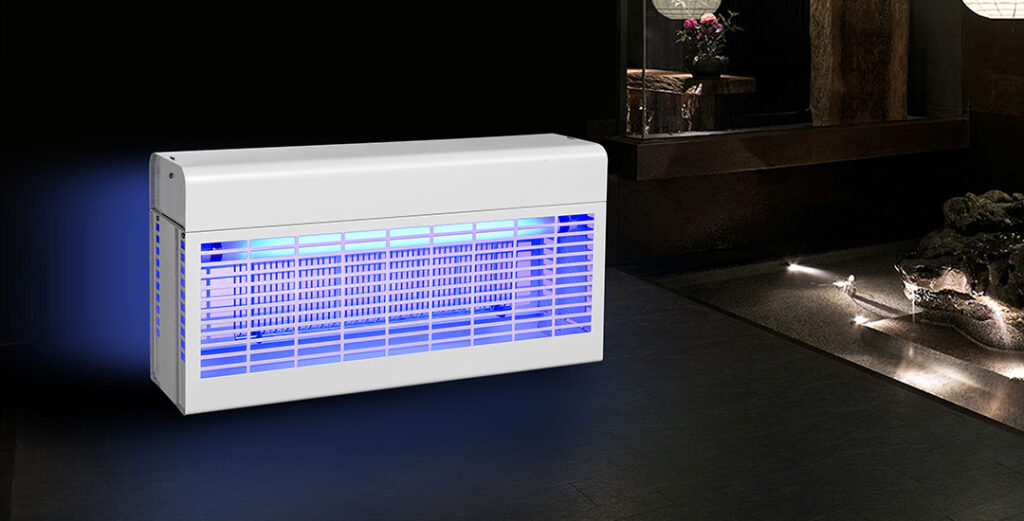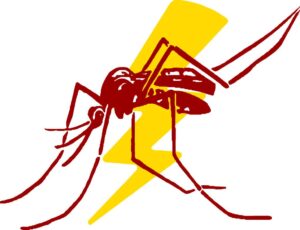Introduction:
UV-A LEDs are often hailed as a modern, efficient alternative to traditional fluorescent tubes in insect killers. They are energy-efficient, eco-friendly, and offer a longer lifespan. However, some users have raised concerns that UV-A LED lights seem less powerful than their fluorescent counterparts. This perception is rooted in several factors, including differences in light emission, design, and how users interpret their performance.
In this blog, we’ll break down the reasons behind this belief and clarify how UV-A LEDs compare to fluorescent tubes in terms of effectiveness and power.

How Do UV-A Lights Work in Insect Killers?
Insect killers rely on ultraviolet (UV-A) light, specifically in the wavelength range of 320–400 nm, to attract insects. UV light mimics the natural light sources that insects are drawn to, such as sunlight and the moon. Once attracted, insects are either trapped or electrocuted by the device.
Both UV-A LEDs and fluorescent tubes emit light in the same wavelength range, but they differ in how they produce and deliver the light. These differences can influence user perceptions of power and effectiveness.
Reasons Why UV-A LEDs May Seem Less Powerful
1. Brightness Perception
- Fluorescent Tubes:
Fluorescent tubes emit both UV-A light and a significant amount of visible light. This makes them appear brighter and more “powerful” to the human eye. However, the visible light they emit does not contribute to attracting insects.
- UV-A LEDs:
UV-A LEDs are designed to emit light more efficiently in the specific UV-A wavelength range that attracts insects. They emit very little visible light, which can make them seem dimmer or less intense, even though they may be more effective at targeting insects.
Reality Check: The “dimness” of UV-A LEDs is not an indicator of lower effectiveness. It simply reflects their focus on producing the targeted UV-A wavelength.
2. Light Dispersion
- Fluorescent Tubes:
Fluorescent lights emit light in all directions, creating a wider spread of UV-A light. This can give the impression of greater coverage.
- UV-A LEDs:
LEDs are directional light sources, meaning they emit light in a focused beam rather than spreading it 360 degrees. While this focus increases efficiency, it can make the coverage seem narrower compared to fluorescent tubes.
Solution: High-quality UV-A LED devices often include reflectors or multiple LEDs arranged strategically to increase coverage.
3. Heat Generation
- Fluorescent Tubes:
Fluorescent tubes generate a considerable amount of heat along with light. Some insects, especially those attracted to warmth, may respond more to these devices because of the combined heat and light output.
- UV-A LEDs:
LEDs produce very little heat, focusing almost entirely on light emission. While this makes them safer and more energy-efficient, it might reduce their appeal to insects that are attracted to heat.
Note: Not all insects are heat-sensitive, so this difference may not significantly impact overall performance.
4. Design and Quality of Devices
The effectiveness of any insect killer depends on its overall design, not just the light source. Poorly designed UV-A LED devices with insufficient LEDs or low-quality components may underperform compared to traditional fluorescent tube devices.
- High-quality devices use powerful LEDs tuned to the optimal UV-A wavelength (typically 365–400 nm) and include reflectors or wide-angle designs for better coverage.
- Lower-quality devices may compromise on LED intensity or use fewer LEDs, leading to reduced effectiveness.
Key Takeaway: A well-designed UV-A LED device can outperform fluorescent tube devices in insect attraction.
5. User Expectations
Many users are accustomed to the bright glow of fluorescent lights, which double as a light source for humans. When switching to UV-A LEDs, the lower visible light output can feel underwhelming, creating a bias that they are “weaker.” This perception is more about appearance than actual insect-attracting power.
Fact: UV-A LEDs are designed specifically for insect attraction, not for visible illumination.
How UV-A LEDs Compensate for These Differences
Despite seeming less powerful, UV-A LEDs have distinct advantages:
- 1. Energy Efficiency: LEDs consume significantly less power than fluorescent tubes, reducing electricity costs over time.
- 2. Targeted Wavelength: UV-A LEDs are engineered to emit light in the exact wavelength range that attracts insects, making them more efficient.
- 3. Long Lifespan: LEDs can last up to 20,000 hours, far outlasting fluorescent tubes, which typically need replacement after 5,000–8,000 hours.
- 4. Eco-Friendliness: Unlike fluorescent tubes, LEDs do not contain mercury, making them safer for the environment and easier to dispose of.
- 5. Durability: LEDs are more robust and less prone to breakage compared to fragile fluorescent tubes.
Overcoming User Concerns: Tips for Maximizing UV-A LED Effectiveness
- 1. Choose High-Quality Devices: Look for UV-A LED insect killers from reputable manufacturers with optimal wavelength output (365–400 nm).
- 2. Ensure Proper Coverage: Select devices with enough LEDs and a good design to ensure wide light dispersion.
- 3. Position Strategically: Place the device in areas with minimal competing light sources to maximize insect attraction.
- 4. Understand the Design: Recognize that the “dim” appearance of UV-A LEDs is intentional, as they are optimized for insect attraction, not human illumination.
Conclusion: Are UV-A LEDs Really Less Powerful?
The belief that UV-A LEDs are less powerful than fluorescent tubes is largely based on differences in brightness perception, heat output, and light dispersion. In reality, UV-A LEDs are more efficient and effective at attracting insects because they emit a precise wavelength of light. While they may appear dimmer or less intense, this design is intentional and focuses on functionality over visible light output.
For users seeking energy efficiency, durability, and eco-friendliness, UV-A LEDs are the superior choice. By choosing high-quality devices and understanding their advantages, you can achieve excellent results with UV-A LEDs while enjoying long-term savings and sustainability.
How Genlinx Delivers the Best in UV-A LED Technology
At Genlinx, we understand the importance of effective and reliable insect control. Our UV-A LED solutions are designed with precision, offering targeted wavelengths, energy efficiency, and long-lasting performance. We prioritize quality and innovation, ensuring our products provide superior insect attraction while being eco-friendly and cost-effective.
Whether you’re looking to upgrade from traditional fluorescent tubes or seeking cutting-edge UV-A LED devices, Genlinx has you covered. Trust us to deliver the best in insect killer technology—combining performance, durability, and sustainability. Explore our range today and experience the Genlinx difference!


